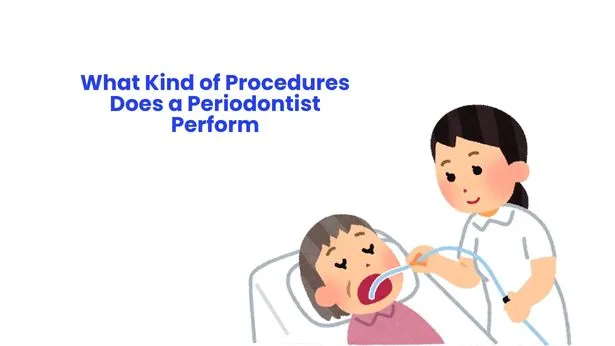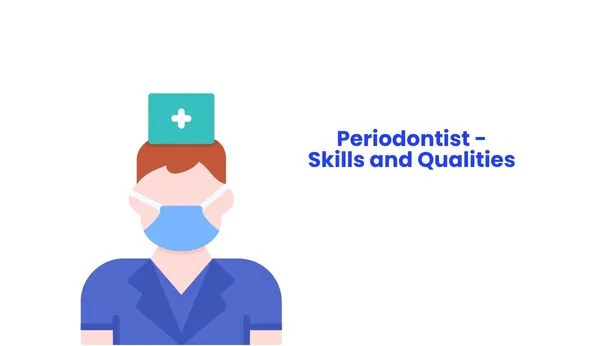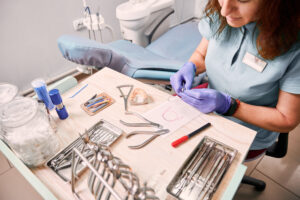How to Become a Periodontist: Complete Career Guide
If you are interested in learning about oral hygiene and considering a dental specialty, learning about how to become a periodontist is a great starting point. Periodontists are dental specialists who prevent, diagnose, and treat diseases of the gums and supporting structures of the teeth, including placing dental implants.
This blog will walk you through the steps to become a periodontist; including education, training, certification, and career pathway information. Whether you live in California or another place across the world, this guide is globally aligned to be your map to a great periodontal career.
What Does a Periodontist Do?

Before we get into what it takes to become a periodontist, let’s set the stage.
A periodontist is defined as a specialist who treats diseases and conditions of the hard and soft tissues of the mouth. This includes:
Treating gum inflammation and diseases such as gingivitis and periodontitis.
Deep cleaning teeth and in-depth scaling/root planing.
Performing gum surgeries and soft tissue.
Placing dental implants.
Working in conjunction with the general dentist and other dental specialists.
Periodontists employ surgical and non-surgical methods and utilize diagnostic aides (such as x-rays and digital imaging) to follow the course of treatment and the overall health of a patient’s mouth.
A Complete Step by Step Guide
Follow this comprehensive, easy-to-understand roadmap outlining each phase of the journey to becoming a periodontist. From education to certification, we’ve covered it all.
Step 1: Obtain a Bachelor’s Degree: The first significant step along the pathway to a career as a periodontist is to earn a bachelor’s degree. There is no “pre-dental” major, but most students will be counseled on a science-based degree, such as:
Biology
Chemistry
Biomedical Sciences
Health Sciences
To be eligible to apply to dental school, you must take the required courses in biology, chemistry, organic chemistry, and physics. California schools, such as UCLA, offer good pre-dental programs. Other UC schools, such as UC Berkeley and other campuses, also have good pre-dental programs.
Step 2: Take the Dental Admission Test (DAT): Before you can apply to dental schools in the U.S. (including California), such as the University of Southern California (USC) School of Dentistry or University of the Pacific, you must take the Dental Admission Test (DAT).
The test contains four sections:
Natural sciences
Perceptual ability
Reading comprehension
Quantitative reasoning
A strong DAT score will enhance your eligibility for dental school admission.
Step 3: Earn a Doctor of Dental Surgery (DDS) or Doctor of Dental Medicine (DMD) Degree: Once accepted, you will normally be in dental school for 4 years completing the accredited DDS or DMD program. The coursework includes:
Oral anatomy
Physiology
Pharmacology
Dental pathology
Clinical Practice
In your final year, all 4th-year dentistry students will spend time in clinical rotations that expose them to different specialties, which include part of their training experience in periodontics.
Step 4: Apply to a Periodontics Residency Program: After receiving your dental degree, you will then need to complete a 3 year residency in periodontics. Periodontics is a dental specialty that solely focuses on periodontal health, implants, and surgery.
Residency programs are competitive and accredited by the Commission on Dental Accreditation (CODA). Core training will include:
Diagnosis and treatment if periodontal diseases
Dental implant surgery
Sedation
Soft tissue grafting
Research methodology
Step 5: Get Licensed: To practice legally, all dentists need to get licensed in their states. Here’s what to do:
Pass the National Board Dental Examination (NBDE) Part I & II (now combined into the INBDE)
Take a clinical licensing exam that is accepted in your state (such as WREB in California)
Undergo background check
Apply to the Dental Board of California (or your state board) for your license.
Step 6: Get Certified by the American Board of Periodontology (ABP): While it is not required, being board-certified by the ABP increases your credibility and your potential for future employment opportunities.
You must complete:
A written exam
An oral examination in which you present your clinical cases.
This certification shows that you have advanced knowledge of periodontics and that you are serious about your profession. Periodontists who are board-certified stand out in the field.
Step 7: Start Your Practice or Work in Care or Research Teams: Once you are licensed and board-certified, you can:
Start your own periodontal practice.
Join a multi-specialty dental clinic.
Work in hospitals or academic institutions.
Work in dental research or public health roles.
Being a periodontist in California can be quite lucrative, particularly in major markets like Los Angeles, San Diego, and San Francisco, where there is high demand for dental implants and cosmetic periodontal services.
Also Read: 5 Highest Paying Dental Jobs
Skills You Need to Succeed as a Periodontist

In addition to technical skills, successful periodontists have:
Ability to notice and document details
Excellent hand-eye coordination
Good communication skills and empathy
Patience and endurance for long hours of a procedure
Desire for continued education and learning about new things
Costs of Becoming a Periodontist
Related Article: Which Career Path is Better for Periodontists
Final Call Over Career Guide of Periodontist
To pursue a career in periodontics is no light task, but the benefits of being a periodontist are noteworthy. You have taken the path to certification and clinical practice in periodontics from the undergraduate level through this process making you one step closer to entering one of the highest regarded specialties of dentistry. Whether you choose to practice in California or the world over, you will have no trouble finding patients.
Ready to take the first step toward a fulfilling dental specialty? Start by exploring pre-dental programs near you and preparing for the DAT. For job placement and career guidance, connect with a trusted periodontist recruitment agency to help you land the right opportunity after your training. Your future as a board-certified periodontist begins today. Contact Hire Smile.
FAQs on How to Become a Periodontist
Q1. How long does it take to become a periodontist?
Overall, this will be about 11–12 years inclusive of undergraduate, dental school, and residency.
Q2. Do I need to be board-certified to practice as a periodontist?
Being board-certified is voluntary, but it is highly encouraged for furthering your career.
Q3. Can I train directly in a periodontics program right out of dental school?
Yes, you will need to apply to and be accepted to a CODA-accredited, three-year periodontics residency.
Q4. What is the average income of a periodontist in California?
Annual salaries are typically in the $200,000 to $250,000+ range.
Q5. What are the educational requirements to be a periodontist?
You must have a bachelor’s degree, a DDS/DMD, and complete the residency in periodontics.
Q6. Can I practice without residency training?
No, residency is required to become a periodontist.
Q7. Is it hard to get a periodontics position in California?
No, there is a demand in California, especially in cities that have an aging population and a desire for cosmetic dentistry.
Q8. How do I prepare for the DAT?
Take DAT prep courses, take practice tests, and focus on science and reasoning.





